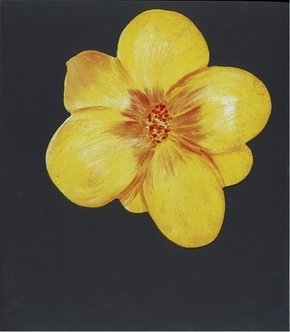
Jörg Immendorff. For All Beloved In The World - Ausstellungskatalog Haus der Kunst, München 2018/19, Reina Sofia, Madrid 2019
| Verlag | Verlag der Buchhandlung König |
| Auflage | 2018 |
| Seiten | 440 |
| Format | 26,1 x 30,3 x 4,2 cm |
| Gewicht | 2725 g |
| ISBN-10 | 3960983751 |
| ISBN-13 | 9783960983750 |
| Bestell-Nr | 96098375A |
FOR ALL BELOVED IN THE WORLD ist der Katalog zur ersten großen Ausstellung, die dem Künstler seit seinem Tod 2007 ausgerichtet wird, und bietet einen thematischen Überblick über sein Werk. Die Identität des Künstlers war tief verwurzelt in der Geschichte Deutschlands und geprägt von der Nachkriegszeit. Über 120 Arbeiten werden nicht in streng chronologischer Abfolge präsentiert, sondern zeigen Schlüsselelemente in der Entwicklung von Immendorffs uvre in einzelnen Kapiteln auf. So ermöglichen sie einen differenzierten Blick auf sein Leben und Werk. Unter den Arbeiten befinden sich einige nur ganz selten zu sehende Leihgaben sowie sehr bekannte Gemälde, die das mehr als vier Jahrzehnte umspannende Schaffen des Künstlers anschaulich machen.
"For All Beloved In The World" is the first major exhibition catalogue devoted to the artist since he died in 2007 and will offer a thematic overview of the work of this German artist, whose identity is deeply enshrined in his home country's history and characterized by a post-war background. More than 120 works will not follow a strict chronology of the works; instead they will present the key element in the development of Immendorff's oeuvre in chapters. They will give a nuanced view of the artist's life and work and will include some of the rarest loans and will bring together more than four decades of the artist's work united with iconic paintings. It was not until the end of the 1970s that Immendorff (1945-2007) decided to shift his threefold existence as a political activist, teacher and painter to the side of art. The year 1976 was key in some respects; Immendorff participated in the Venice Biennale with a flyer campaign that attacked the "deprivation of personal liberty" in the GDR and called for international artistic cooperation as a vehicle to overcome it; this was followed in 1978 by the beginning of his Café Deutschland series, inspired by Renato Guttuso's Café Greco, which Immendorff had seen in an exhibition in Cologne. With his work on the Café Deutschland series, Immendorff's painting became more expressive through his bold use of color and gesture, thereby also freeing him of ideologically imbued emblematics. The process of change introduced here, with its formal and substantive opening-up, developed into the artist's last work phase, a visual-linguistic "clearing" in the sense of a new pictorial energy and lightness, which Immendorff once described as a "liberation blow."
